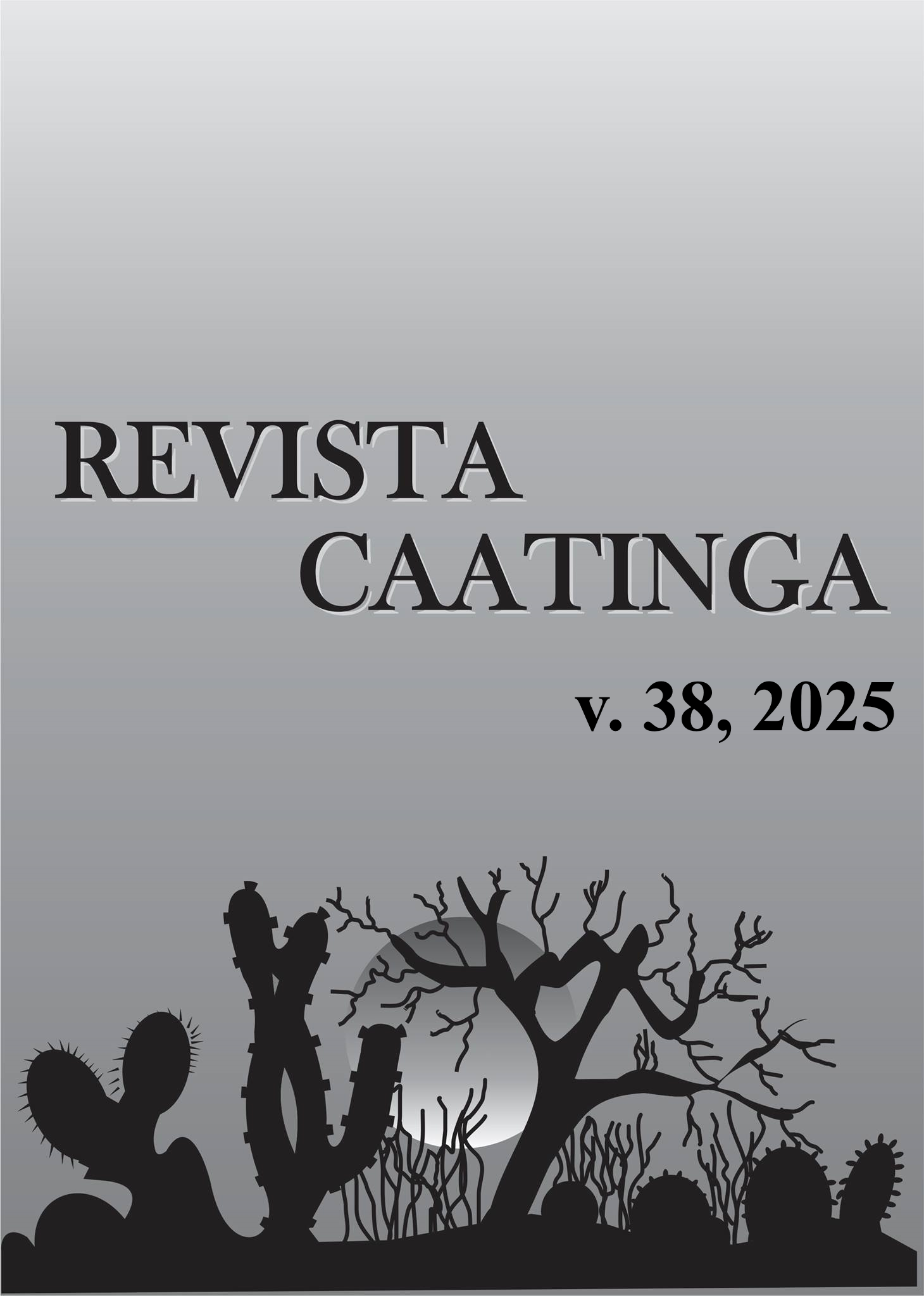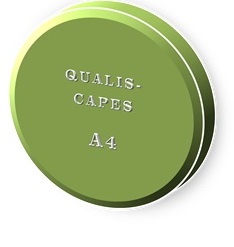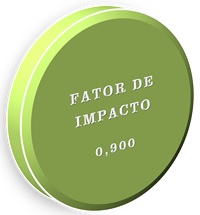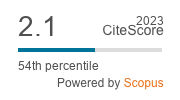Introgressão de genes de nanismo em tomateiro por retrocruzamento visando fruto do tipo salada
DOI:
https://doi.org/10.1590/1983-21252025v3812718rcResumo
Este estudo investiga a introgressão de genes de nanismo em populações de tomate por meio de retrocruzamentos sucessivos, visando melhorar a qualidade dos frutos do tipo salada e as características agronômicas. A hibridização entre o genitor recorrente (UFU-57) e o genitor doador anão (UFU MC TOM 1) foi seguida por três gerações de retrocruzamento (BC1, BC2, BC3). As etapas metodológicas incluíram hibridização, seleção de plantas anãs e avaliação das características agronômicas e da qualidade dos frutos. Foram observadas melhorias significativas nas características agronômicas e na qualidade nutricional dos frutos, com UFU-DTOM 4#4-11-1 (BC3) apresentando o aumento mais substancial na massa do fruto, alcançando um aumento de 816% em comparação com o genitor doador anão. Os resultados indicam a eficácia do retrocruzamento na restauração das características dos frutos do tipo salada e no aumento da massa do fruto, espessura da polpa e conteúdo nutricional, como β-caroteno e licopeno. A conclusão destaca a importância da terceira geração de retrocruzamento no desenvolvimento de linhas de tomate anão com características superiores para o mercado de frutos do tipo salada.
Downloads
Referências
BHERING, L. L. et al. Genetic gains in physic nut using selection indexes. Pesquisa Agropecuária Brasileira, 47: 402-408, 2012.
CAMMARERI, M. et al. Local Agro-Environmental Conditions Impact Fruit Quality, Sensory Properties and Consumer Acceptance of Long Shelf-Life Tomatoes. Agronomy, 13: 1265, 2023.
CRUZ, C. D. Genes Software – extended and integrated with the R, Matlab and Selegen. Acta Scientiarum Agronomy, 38: 547-552, 2016.
DIAS, D. M. et al. Acylsugars in tomato varieties confer resistance to the whitefly and reduce the spread of fumagine. Bragantia, 80: e4421, 2021.
FAOSTAT. The journey from poisonous curiosity to popular ingrediente. Available at: <https://www.fao.org/newsroom/story/The-journey-from-poisonous-curiosity-to-popular-ingredient/en>. Access on: Apr. 20, 2024.
FINZI, R. R. et al. The agronomic performance of mini-tomato hybrids from dwarf lines. Ciência e Agrotecnologia, 41: 15-21, 2017.
FINZI, R. R. et al. Agronomic potential of BC1F2 dwarf round tomato populations. Ciência e Agrotecnologia, 44: 1981-1829, 2020.
GASPARINI, K. et al. Natural Genetic Variation In The Hairs Absent (H) Gene Increases Type-Vi Glandular Trichomes In Both Wild And Domesticated Tomatoes. Journal of Plant Physiology, 280: 153859, 2023.
GOMES, D. A. et al. Selection of BC1F3 populations of Santa Cruz type dwarf tomato plant by computational intelligence techniques. Bragantia, 80: 1-12, 2021.
INGALLINA, C. et al. New hybrid tomato cultivars: An NMR-based chemical characterization. Applied Sciences, 10: 1887, 2020.
KLEIN, L. A. et al. Selection of superior black oat lines using the MGIDI index Crop. Crop Breeding and Applied Biotechnology, 23: e45112332, 2023.
KWON, C. et al. Rapid customization of Solanaceae fruit crops for urban agriculture. Nature Biotechnology, 38: 182-188, 2020.
LEITE, W. S. et al. Genetic parameters estimation, correlations and selection indexes for six agronomic traits in soybean lines F8. Comunicata Scientiae, 7: 302-310, 2016.
LI, N. et al. Identification of the Carbohydrate and Organic Acid Metabolism Genes Responsible for Brix in Tomato Fruit by Transcriptome and Metabolome Analysis. Frontiers in Genetics, 12: 714942, 2021.
LIU, X. et al. Is a Putative Candidate Gene for qtph1. 1, a Major-Effect Quantitative Trait Locus Controlling Tomato Plant Height. Frontiers in Genetics, 11: 881, 2020.
LONDOÑO-GIRALDO, L. M. et al. Gone wild: Integration of antioxidative, physicochemical, volatilomic and sensorial profiles ratify rustic relatives of cherry tomato as ideas mating partners. Scientia Horticulturae, 277: 1-10, 2021.
MACIEL, G. M.; SILVA, E. C. D.; FERNANDES, M. A. R. Dwarfism occurrence in tomato plant type grape. Revista Caatinga, 28: 259-264, 2015.
MARTI, E. et al. Genetic and physiological characterization of tomato cv. Micro-Tom. Journal of Experimental Botany, 57: 2037-2047, 2006.
OLIVEIRA, C. S. et al. Selection of F2 RC1 saladette-type dwarf tomato plant populations for fruit quality and whitefly resistance. Revista Brasileira de Engenharia Agrícola e Ambiental, 26: 28-35, 2022.
PANTHEE, D. R.; GARDNER, R. G. ‘Mountain Honey’ hybrid grape tomato and its parent NC 6 grape breeding line. Hortscience, 48: 1192-1194, 2013.
R DEVELOPMENT CORE TEAM. R: A language and environment for statistical computing. R Foundation for Statistical Computing. Vienna: R Foundation for Statistical Computing. 2022. Available at: . Access on: Jan. 21, 2023.
RAJENDRAN, S. et al. Tomato Yield Effects of Reciprocal Hybridization of Solanum lycopersicum Cultivars M82 and Micro-Tom. Plant Breeding and Biotechnology, 10: 37-48, 2022.
SCHWARZ, K. et al. Agronomic performance and physico-chemical quality in tomato hybrids grown without guiding. Horticultura Brasileira, 31: 410-418, 2013.
SIDDIQUI, M. W.; AYALA-ZAVALA, J. F.; DHUA, R. S. Genotypic variation in tomatoes affecting processing and antioxidant attributes. Critical Reviews in Food Science and Nutrition, 55: 1819-1835, 2015.
SUN, X. et al. Identification and characterization of EI (Elongated Internode) gene in tomato (Solanum lycopersicum). International Journal of Molecular Sciences, 20: 2204, 2019.
VAZQUEZ, D. V. et al. Genetic basis of the lobedness degree in tomato fruit morphology. Plant Science, 319: 111258, 2022.
WANG, Q. et al. Genetic analysis and mapping of dwarf gene without yield penalty in a γ-ray-induced wheat mutant. Frontiers in Plant Science, 14: 1133024, 2023.
WATI, R. K.; PAHLAWAN, M. F. R.; MASITHOH, R. E. Development of calibration model for pH content of intact tomatoes using a low-cost Vis/NIR spectroscopy: In: IOP CONFERENCE SERIES EARTH AND ENVIRONMENTAL SCIENCE, 2021, Yogyakarta. Proceedings... Yogyakarta: IOP Publishing, 2021, vol. 686.
ZHU, Q. et al. Redesigning the tomato fruit shape for mechanized production. Nature Plants, 9: 1659-1674, 2023.
ZSÖGÖN, A. et al. Genome editing as a tool to achieve the crop ideotype and de novo domestication of wild relatives: Case study in tomato. Plant Science, 256: 120-130, 2017.
Downloads
Publicado
Edição
Seção
Licença
Os Autores que publicam na Revista Caatinga concordam com os seguintes termos:
a) Os Autores mantêm os direitos autorais e concedem à revista o direito de primeira publicação, com o trabalho simultaneamente licenciado sob a Licença Creative Commons do tipo atribuição CC-BY, para todo o conteúdo do periódico, exceto onde estiver identificado, que permite o compartilhamento do trabalho com reconhecimento da autoria e publicação inicial nesta revista, sem fins comerciais.
b) Os Autores têm autorização para distribuição não-exclusiva da versão do trabalho publicada nesta revista (ex.: publicar em repositório institucional ou como capítulo de livro), com reconhecimento de autoria e publicação inicial nesta revista.
c) Os Autores têm permissão e são estimulados a publicar e distribuir seu trabalho online (ex.: em repositórios institucionais ou na sua página pessoal) a qualquer ponto antes ou durante o processo editorial, já que isso pode gerar alterações produtivas, bem como aumentar o impacto e a citação do trabalho publicado (Veja O Efeito do Acesso Livre).







